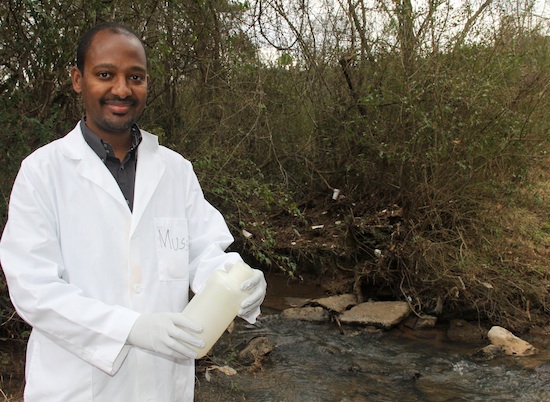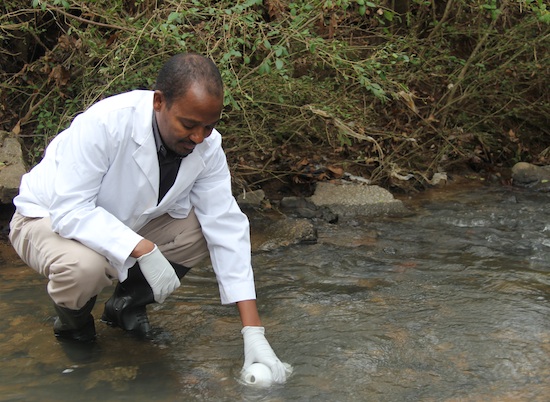A University of Georgia soil scientist is studying how on-site home septic systems affect the quality and quantity of water in Georgia’s rivers and streams.
Waste from most Georgia homes is managed through centralized sewage treatment plants. But 36.8 percent of Georgia homes, and 25 percent of homes in the United States, use septic systems.
According to the Environmental Protection Agency, septic systems in the Southeast are used by 43.6 percent of Alabama homes, 48.5 percent of North Carolina homes and 40.6 percent of South Carolina homes.
More units added each year
“Data for Metro Atlanta shows 525,970 septic systems in 2006, and more than 12,000 units were projected to be added each year,” said Mussie Habeteselassie, the College of Agricultural and Environmental Sciences researcher conducting the wastewater study. His study focuses on determining how septic systems affect water quality in Georgia and the Southeast.
“Home septic systems are still very common, and not just in rural areas,” he said. “On-site septic systems drain into drain fields where the soil treats the waste water. The soils filter out the contaminants in the waste water before it reaches the ground water and the streams.”
Based on the UGA campus in Griffin, Habteselassie leads the project that is testing the bacteria, nutrient and hormone levels in streams in the Oconee and Ocmulgee river basins in Gwinnett County. Test sites are set up both where a high number of septic tanks are located and in areas where the number of septic tanks is significantly lower, he said.
Final year of a three-year study
Habteselassie worked with other scientists at UGA and the Georgia Water Science Center of the United States Geological Survey in Atlanta to complete the study. Habteselassie has taken water samples several times a year for the past two years under both dry and storm conditions. Samples will continue to be taken and tested through 2014 for the three-year study.
“We also measure stream flow to determine the impact of septic systems on water quantity,” Habteselassie said.
Septic systems appear to increase stream flows
The streams tested in the study are used for recreational purposes, not as drinking water sources. So far his data show mixed results. Early data shows areas with a high density of septic systems have streams with increased levels of bacteria and nutrients, particularly after storms.
However, early data also suggests dry season stream flows are higher in areas with a high density of septic systems.
“People have felt septic systems take water away, but it seems that water from septic systems actually increases water flow in streams,” Habteselassie said. “In low-density septic system areas, the stream flow is lower.”
The U.S. Department of Agriculture, National Institute of Food and Agriculture and the National Integrated Water Quality Program are funding the project, which will conclude the end of 2014.









